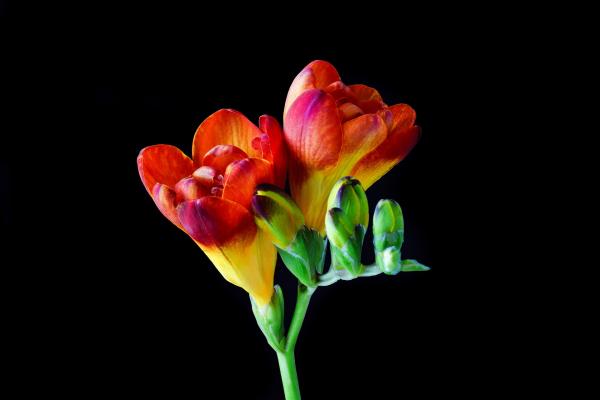By Beatrice Hawkins
Regardless of the cold snap recently Spring really is here. September 1st has come and gone and my friend has Freesias in many colours, flowering beautifully in her garden.
The wattle is out everywhere and no doubt causing allergy problems with some folk, but regardless of this, I love the spectacular sight of glorious yellow everywhere. Our day to celebrate the national flower has also passed and gone by unnoticed in the current news.
As a child August 1st was always celebrated as wattle day and all horses birthday’s, a piece of trivia I knew from a very young age even though I didn’t have a horse and my my family was not into racing thoroughbreds!
A Cootamundra wattle bloomed beautifully at the end of the road where I caught the bus to school.
August 1st was never officially designated as wattle day however, and when Bob Hawke was Prime Minister his wife Hazel had September 1st officially declared as the day to celebrate.
Wattle is the perfect candidate to have as our national flower as there are so many varieties, about 1350 world wide and over 1000 in Australia, there is always some blooming somewhere, everyday!
Freesias were always a childhood favourite also and many bunches were picked for mum from the side of the road as I walked home from the bus.
They were the old fashioned highly perfumed cream ones and they remain my favourite, although I do appreciate the fabulous colours available now.
As with many of the hardy plants in out gardens here, they are native to South Africa and became popular in England and Europe in the 1800s.
In the language of flowers they are said to represent friendship, purity and innocence with the white ones often used in bridal bouquets to symbolise trust. It was named for a German physician/botanist Friedrich Heinrich Theodore Freeze by another botanist as a tribute to their friendship.
Maybe that accounts for my attachment to them.. one of my grandfathers was christened Heinrich and both were known as Henry!
The common ones are super easy to grow and will spread easily. When I was last in WA with my grandchildren we picked bunches from the roadside around Dwellingup.
I know you are not supposed to pick anything from the bush in WA, but, as they are not a native and were taking over in the area, I rationalised that I was really being a conservationist by removing them!
Also being very nostalgic and enjoying the perfume! Even though my Mum was gone before my daughter was very old, she still knows the attachment and the reason for enjoying them.
The spectacular coloured ones are now cultivated widely for the cut flower trade as they last so well when picked as the first flower opens. They are easy to grow in the home garden and naturalise well.
Full sun to part shade is their preferred situation in free draining fertile soil but they aren’t fussy and will grow almost anywhere with little attention.
The ones I used to pick as a child grew in hard clay soil at the edge of a gravel road, while the ones in WA were in very sandy soil, so they really are a very adaptable flower.
Another beauty I am enjoying in my garden and in others as I drive around and also on council street corners is lavender in many shades of mauve, pinks, purples and white. There are so many different varieties around that there is a colour to suit most situations.
This to, is a very hardy, easy to grow, addition to any garden. I have 2 different ones in my yard. Full sun and well drained soil with the addition of lime in many areas of Australia should produce a lovely display.
There are so many types, but from my reading, English seems to be the recommended variety for Australia. However, others have also been bred specifically for our Australian conditions.
My neighbour has the pretty pink “princess” bushes growing very freely in her garden where they self seed and naturalise beautifully.
Another garden that I drive past regularly has about 4 different types and colours making a beautiful show. The English Lavender growing beautifully on the corners in the business centre in Palmerin Street look terrific and the parks and gardens people are to be commended.
There are Spanish, French and Italian varieties that all have their own specific properties, flower types and colours. So many to choose from.. a real gardeners conundrum!
Don’t forget the Horticultural Society’s Garden Competition and Spring Flower Show in the first weeks of October. Schedules will again be available from Bryson’s Place in Palmerin Street.
There is sure to be a section you can enter and without your entries we have no show!







